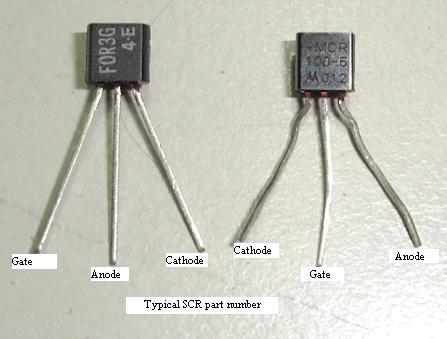INTRODUCTION:-


In the normal "off" state, the device restricts current to the leakage current. When the gate-to-cathode voltage exceeds a certain threshold, the device turns "on" and conducts current. The device will remain in the "on" state even after gate current is removed so long as current through the device remains above the holding coupling. Once current falls below the holding current for an appropriate period of time, the device will switch "off". If the gate is pulsed and the current through the device is below the holding current, the device will remain in the "off" state.
If the applied voltage increases rapidly enough, capacitive coupling may induce enough charge into the gate to trigger the device into the "on" state; this is referred to as "dv/dt triggering." This is usually prevented by limiting the rate of voltage rise across the device, perhaps by using asnubber. "dv/dt triggering" may not switch the SCR into full conduction rapidly and the partially-triggered SCR may dissipate more power than is usual, possibly harming the device.
SCRs can also be triggered by increasing the forward voltage beyond their rated break down voltage (also called as break ver voltage), but again, this does not rapidly switch the entire device into conduction and so may be harmful so this mode of operation is also usually avoided. Also, the actual breakdown voltage may be substantially higher than the rated breakdown voltage, so the exact trigger point will vary from device to device.
SCRs are made with voltage ratings of up to 7,500 V, and with current ratings up to 3,000 RMS amperes per device. Some of the larger ones can take over 50 kA in single-pulse operation. SCRs are used in power switching, phase control, chopper, battery charger, and inverter circuits. Industrially they are applied to produce variable DC voltages for moters (from a few to several thousand HP) from AC line voltage. They control the bulk of the dimmers used in stage lighted, and can also be used in some electric vehicles to modulate the working voltage in a jacabson circuit. Another common application is phase control circuits used with inductive loads. SCRs can also be found in welding power suplies where they are used to maintain a constant output current or voltage. Large silicon-controlled rectifier assemblies with many individual devices connected in series are used in high voltage DC converter stations.
Two SCRs in "inverse parallel" are often used in place of a TRIAC for switching inductive loads on AC circuits. Because each SCR only conducts for half of the power cycle and is reverse-biased for the other half-cycle, turn-off of the SCRs is assured. By comparison, the TRIAC is capable of conducting current in both directions and assuring that it switches "off" during the brief zero-crossing of current can be difficult.
Typical electrostatic discharge (ESD) protection structures in integrated circuits produce a parasitic SCR. This SCR is undesired; if it is triggered by accident, the IC can go into latch up and potentially be destroyed.






0 comments:
Post a Comment